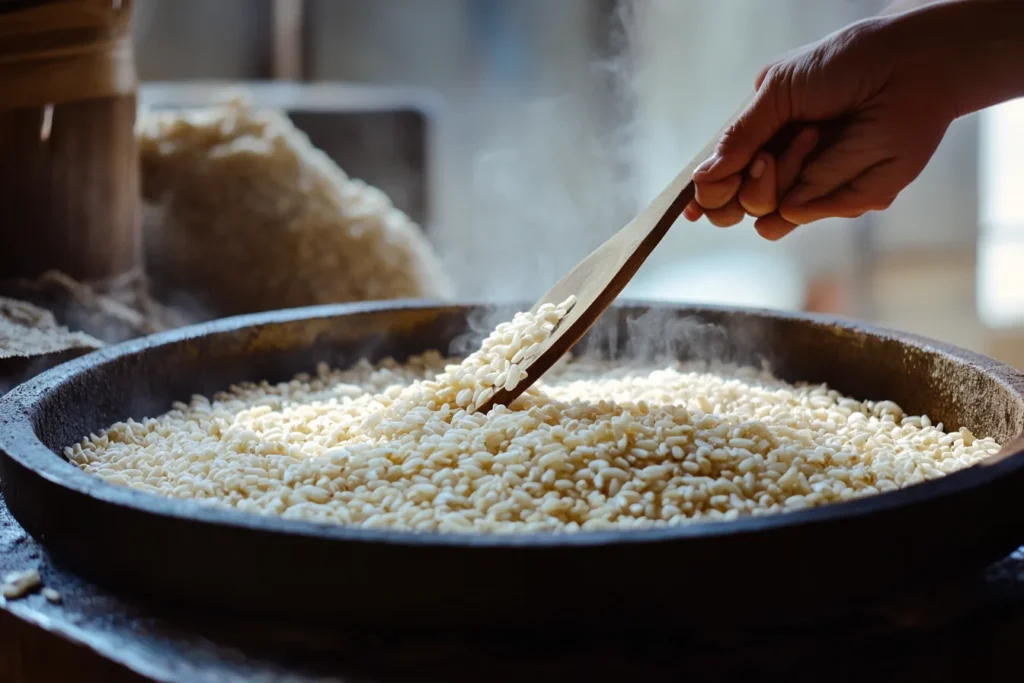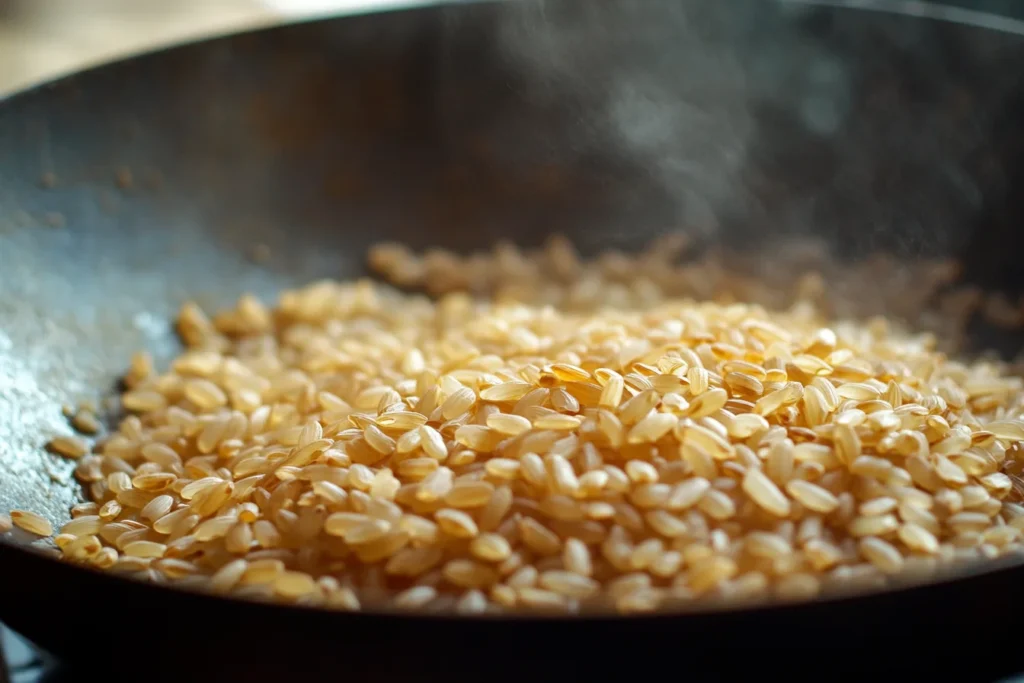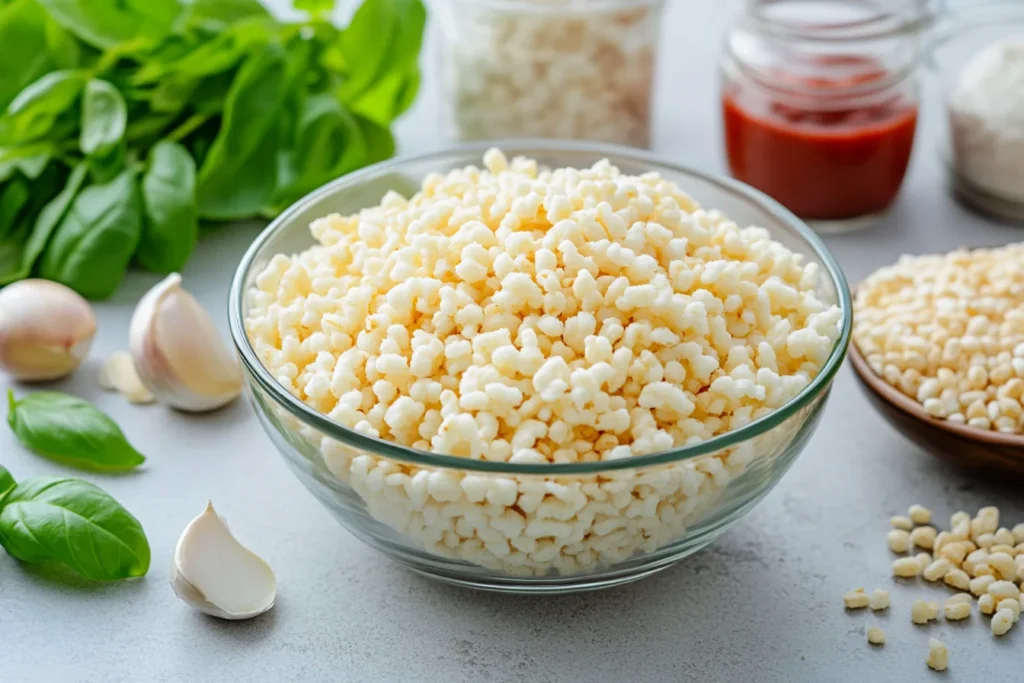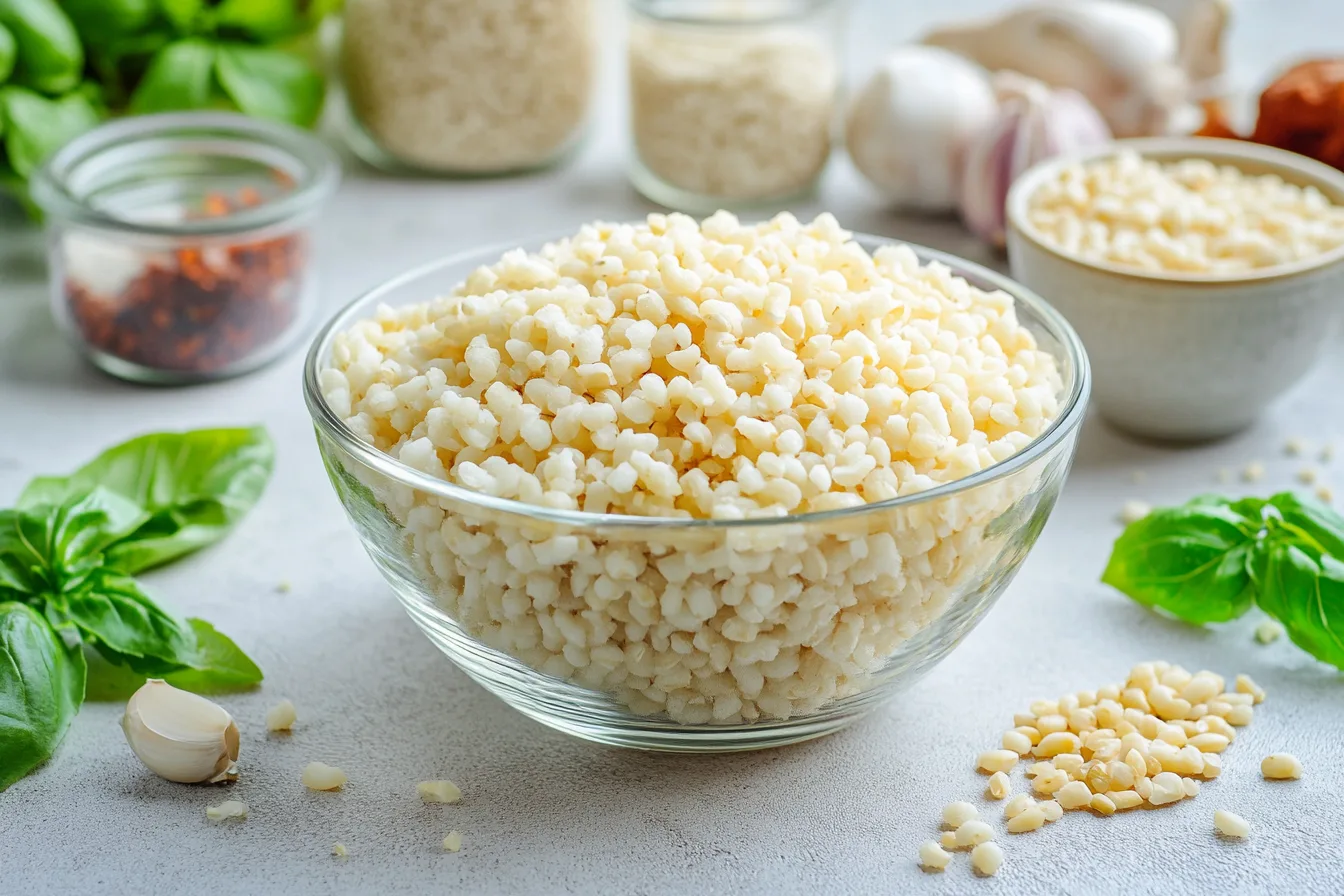What Kind of Rice Is Used for Puffed Rice?
Puffed rice is a staple aspect in lots of worldwide cuisines, recognised for its light, crispy texture and flexibility in both candy and savory dishes. But have you ever ever puzzled what form of rice is used for puffed rice? Understanding the kind of rice used is important to appreciating this culinary surprise.
The form of rice determines no longer only the texture but also the flavor and structure of puffed rice. Some rice types puff up better than others due to differences in starch content and grain structure. Additionally, the processing approach performs a giant role inside the very last product. Whether you enjoy puffed rice in a snack mix or as a quick, low-calorie treat, understanding its foundation allows deepen your appreciation for this delightful food. If you’re curious approximately how rice transforms in distinctive recipes, take a look at out The Ultimate Sassy Rice Recipe or study What Is the Fried Rice Recipe Syndrome?.

Table of Contents
The Basics of Rice Varieties
Rice is one of the most diverse grains, with thousands of varieties grown around the world. These can be broadly classified into two types based on grain length and starch composition: long-grain and short-grain. Both categories have specific characteristics that influence how they react to heat and pressure, which are key factors in puffing.
Long-Grain Rice: This type is characterized by its slender shape and firm texture. It contains a higher proportion of amylose, a type of starch that affects puffing.
Short-Grain Rice: These grains are rounder and stickier due to their higher amylopectin content, another starch type.
When considering what kind of rice is used for puffed rice, it’s important to evaluate the grain’s ability to expand without breaking. Typically, rice with a moderate starch balance is preferred, as it achieves the light texture associated with puffed rice.
Preferred Rice Types for Puffed Rice
While many rice varieties can technically be puffed, not all of them yield the ideal texture and taste. The most commonly used rice types for puffed rice production include the following:
- Parboiled Rice
Parboiled rice undergoes partial boiling in the husk, which enhances its starch structure. This process makes it an excellent candidate for puffing because it retains its shape while developing a light, airy consistency. - White Rice
Certain types of polished white rice, particularly medium-grain varieties, are often chosen for puffing due to their consistent quality and smooth texture. The lack of bran ensures even puffing. - Brown Rice
While less common, brown rice can also be puffed. Its higher fiber content results in a crunchier texture, making it a popular choice for health-focused snacks.
Each of these rice types reacts differently during the puffing process, which is why producers often experiment to achieve the desired result. The key is finding rice that balances structure, starch content, and moisture levels.
How Rice Is Processed for Puffed Rice
Processing rice to make puffed rice includes unique steps that enhance the grain’s ability to increase underneath warmness and strain. Here’s the way it normally works:
Soaking
The selected rice is soaked in water to growth its moisture content. This step softens the grains and prepares them for the warmth treatment.
Drying
After soaking, the rice is carefully dried to attain an most suitable moisture degree. Too a great deal or too little moisture can restrict the puffing procedure.
Heat Application
The rice is subjected to excessive warmth, frequently using strategies like roasting or frying. The trapped moisture becomes steam, inflicting the grains to self-praise.
Cooling and Packaging
Once puffed, the rice is cooled and often lightly salted or sweetened before packaging.
These steps spotlight why sure rice types, along with parboiled or medium-grain white rice, are higher acceptable for puffed rice. Their structural integrity guarantees they preserve up well at some point of the extreme warmness software.
Traditional Methods for Making Puffed Rice
For centuries, puffed rice has been prepared using traditional techniques passed down through generations. These methods are simple yet effective, relying on basic tools and natural processes to achieve the signature light and crispy texture. If you’re curious about what kind of rice is used for puffed rice in traditional methods, the answer often depends on local preferences and availability.
- Roasting in Sand
In this method, rice grains are roasted in hot sand, which evenly distributes heat and allows the moisture inside the grains to turn into steam. As the steam expands, the rice puffs up. Medium-grain white rice and parboiled rice are commonly used due to their ability to withstand high heat without breaking. - Boiling and Drying
Some traditional recipes involve boiling rice lightly before drying it under the sun. This prepares the grains for puffing by ensuring the right moisture balance. Brown rice is occasionally used in this method for a chewier texture. - Wood-Fired Heating
Rural communities often use wood-fired stoves for heating rice, which gives the puffed rice a distinct smoky flavor. Parboiled rice is particularly suitable here because of its robust structure.
These time-tested methods showcase the ingenuity of using simple resources to produce puffed rice, highlighting the importance of choosing the right type of rice for consistent results.
Modern Industrial Methods
With advancements in technology, the production of puffed rice has moved to industrial settings. Modern methods prioritize efficiency, consistency, and scalability while maintaining the crispy texture consumers love. When answering what kind of rice is used for puffed rice in industrial processes, manufacturers often select varieties with uniform size and moisture content.
Key Steps in Modern Production:
Pre-Treatment
The rice is cleaned, soaked, and partially boiled to achieve the right moisture content. Parboiled and medium-grain white rice are often preferred because they perform well during these preliminary steps.
Puffing Machinery
Specialized machines, like hot air puffers or extrusion devices, are used to apply heat and pressure. These systems create the rapid temperature changes needed for puffing.
Flavoring and Packaging
After puffing, the rice may be lightly seasoned with salt or spices. It’s then cooled and packed for distribution.
Modern techniques allow for large-scale production of puffed rice while ensuring consistent quality. This shift to industrial methods has made puffed rice more accessible to consumers worldwide.

Nutritional Benefits of Puffed Rice
Puffed rice isn’t just a tasty snack it also offers a variety of nutritional benefits, making it a popular choice for health-conscious eaters. The type of rice used plays a big role in determining its nutritional profile, which is why understanding what kind of rice is used for puffed rice matters.
Key Nutritional Highlights:
Low in Calories: Puffed rice is light and low in calories, making it a great option for those looking to manage their weight.
Easy to Digest: The puffing process breaks down complex starches, making puffed rice gentle on the stomach.
Rich in Carbohydrates: As a good source of quick energy, it’s ideal for a midday snack or a post-workout boost.
Gluten-Free: Like all rice-based foods, puffed rice is naturally gluten-free, catering to people with dietary restrictions.
While white rice-based puffed rice is higher in carbs and lower in fiber, brown rice puffed rice offers additional nutrients like magnesium and fiber. No matter the variety, puffed rice can be a healthy part of a balanced diet when enjoyed in moderation.
Popular Uses of Puffed Rice
Puffed rice is one of the maximum versatile meals ingredients, loved in lots of dishes across the globe. Whether utilized in snacks, cereals, or desserts, puffed rice provides a unique crunch and lightness that few other ingredients can match. Understanding what kind of rice is used for puffed rice allows provide an explanation for its adaptability in extraordinary recipes.
Common Uses:
Snack Mixes
In India, puffed rice is a key ingredient in bhel puri, a savory street snack mixed with spices, peanuts, and fresh vegetables.
Breakfast Cereals
Puffed rice is a popular choice in cereals due to its light texture and ability to hold up well in milk.
Sweet Treats
From crispy rice bars to caramel-coated puffed rice, it’s a go-to for desserts.
Diet-Friendly Meals
Puffed rice is often used in low-calorie salads or as a filler in healthy snack recipes.
Challenges in Making Puffed Rice
Making puffed rice, whether at home or in large-scale production, comes with its fair share of challenges. The process requires precision in heat application, moisture levels, and the selection of the right rice variety. The question what kind of rice is used for puffed rice becomes central because not all rice performs well under the puffing process.
Common Challenges:
Inconsistent Puffing
Without the right moisture content, some rice grains puff poorly, resulting in uneven texture. Parboiled and medium-grain rice are often used to address this issue.
Overheating or Burning
Achieving the right temperature is crucial. Too much heat can burn the grains, while insufficient heat leads to partial puffing.
Retention of Crispness
Puffed rice can become soggy if not stored properly. Selecting rice with the right starch balance ensures better shelf life.
Accessibility of Ideal Rice Types
Not all regions have access to parboiled or polished rice varieties that are ideal for puffing, making the process more challenging.
Understanding these obstacles can help both home cooks and manufacturers refine their techniques for producing light and crispy puffed rice.
Tips for Making Puffed Rice at Home
If you want to try making puffed rice at home, you’re in for a rewarding experience. While it’s not as straightforward as making popcorn, the process is achievable with a few key tips. But first, let’s revisit what kind of rice is used for puffed rice. Medium-grain or parboiled rice tends to work best because it handles heat and pressure well.
Tips for Success:
Start with Soaked and Dried Rice
Soak the rice for a few hours to increase moisture, then dry it completely to prepare for puffing.
Use a Heavy-Bottomed Pan
A thick pan distributes heat evenly, reducing the risk of burning the rice.
Heat in Small Batches
Puffing works best when you don’t overcrowd the pan. Small batches ensure even puffing.
Monitor the Temperature
High but controlled heat is essential. Too low, and the rice won’t puff; too high, and it may burn.
With these steps, you’ll be able to create puffed rice at home that rivals store-bought versions.

FAQs About Puffed Rice and Its Varieties
What kind of rice is used for puffed rice in most recipes?
Parboiled and medium-grain white rice are the most common choices. Their structure and starch content make them ideal for puffing.
Can you make puffed rice with brown rice?
Yes, but brown rice produces a crunchier texture. It requires careful heat control due to its higher fiber content.
Why doesn’t all rice puff properly?
Rice varieties differ in starch composition and moisture retention. Long-grain rice, for example, doesn’t puff well due to its low amylopectin content.
Is puffed rice healthy?
Yes! It’s low in calories, easy to digest, and gluten-free, making it a great snack or cereal base.
Conclusion: Choosing the Right Rice for Puffed Rice
The journey of creating puffed rice starts offevolved with expertise what form of rice is used for puffed rice. Whether you pick parboiled rice for its consistency or brown rice for its introduced vitamins, the choice of rice is prime to achieving the correct puff. By addressing common challenges and following easy recommendations, you may experience selfmade puffed rice that’s as scrumptious as it’s far pleasurable.

